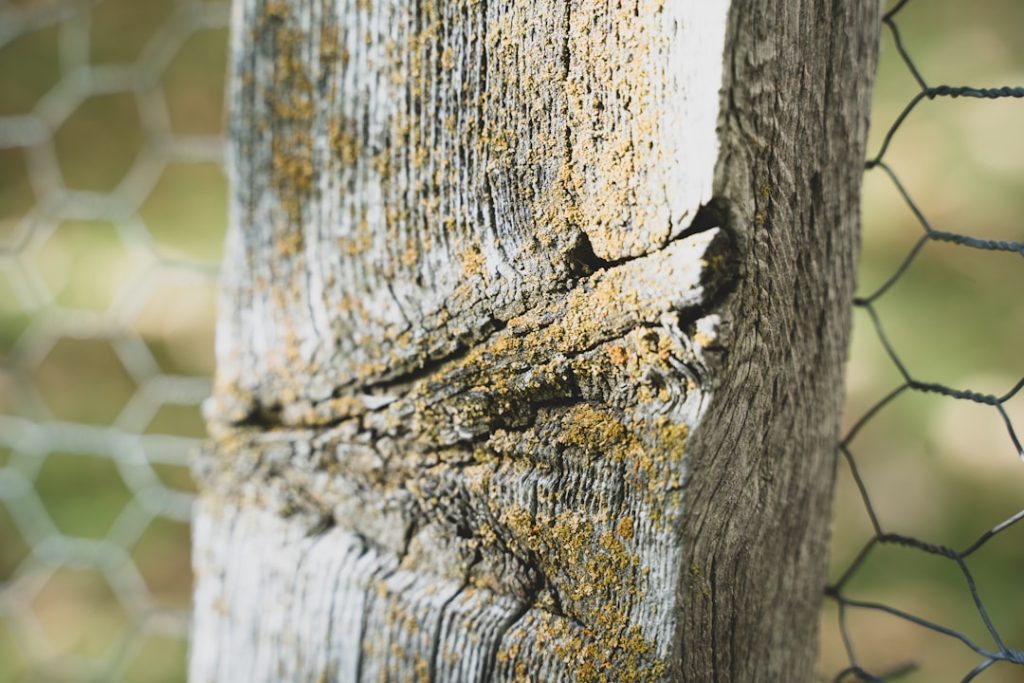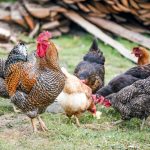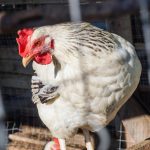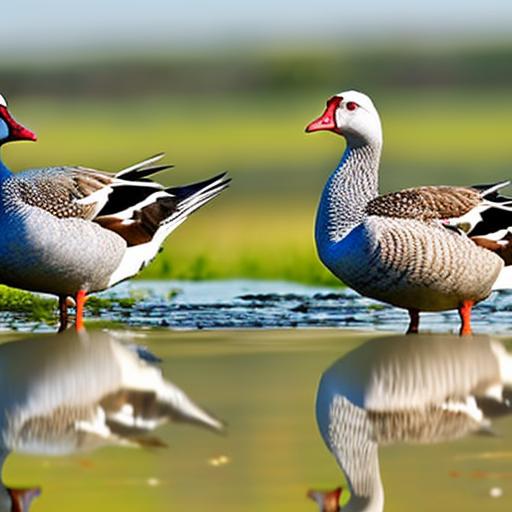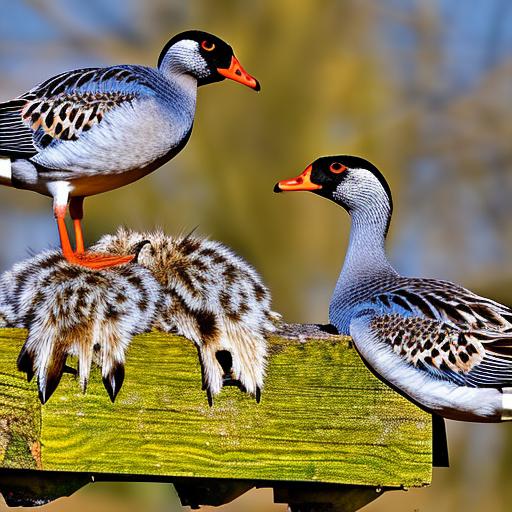Chickens possess an innate flying instinct, a trait shared with numerous avian species. This instinct is genetically encoded and serves as a crucial survival mechanism in natural habitats. Flight enables chickens to evade predators, locate food and water sources, and navigate their surroundings.
Despite domestication potentially reducing the necessity for flight, this instinct remains deeply embedded in chickens. When designing a brooder for young chicks, it is essential to consider this inherent flying instinct. The environment should be structured to accommodate and encourage natural behaviors, including flight, while maintaining safety standards.
Adequate space and environmental enrichment are key factors in promoting these innate behaviors. Chickens are gregarious creatures that thrive on freedom of movement. Recognizing their flying instinct allows for the creation of a brooder setup that addresses their natural requirements and promotes optimal development.
This approach ensures that young chicks can express their innate behaviors in a controlled and secure environment.
Table of Contents
- 1 Choosing the right brooder setup
- 2 Providing adequate space and enrichment
- 3 Clipping wings
- 4 Using a cover or lid
- 5 Minimizing stress and boredom
- 6 Supervising and monitoring the brooder
- 7 FAQs
- 7.1 What is a brooder?
- 7.2 Why do chickens try to fly out of the brooder?
- 7.3 How can I prevent chickens from flying out of the brooder?
- 7.4 What other measures can I take to keep chickens from flying out of the brooder?
- 7.5 Are there any specific breeds of chickens that are more prone to flying out of the brooder?
Key Takeaways
- Birds have an instinct to fly, so it’s important to understand and accommodate this natural behavior in brooder setups
- Choosing the right brooder setup is crucial for the well-being of the birds, considering factors such as size, temperature, and safety
- Providing adequate space and enrichment in the brooder helps to keep the birds healthy and stimulated
- Clipping wings can be a necessary step to prevent birds from flying out of the brooder and getting injured
- Using a cover or lid on the brooder can help to contain the birds and prevent them from escaping
- Minimizing stress and boredom in the brooder environment is essential for the overall health and well-being of the birds
- Supervising and monitoring the brooder regularly is important to ensure the safety and comfort of the birds
Choosing the right brooder setup
Brooder Size and Space
The size of the brooder is crucial, as it needs to provide sufficient space for the chicks to move around and exercise their wings. A good rule of thumb is to allow at least 1 square foot of space per chick in the brooder.
Heating and Temperature Control
The brooder should also be equipped with the right heating source to keep the chicks warm and comfortable. A heat lamp or heating pad can be used to maintain the proper temperature for the chicks, which is around 95 degrees Fahrenheit for the first week and then decreased by 5 degrees each week until they are fully feathered.
Enrichment and Stimulation
In addition to space and heating, it’s essential to provide enrichment in the brooder. This can include perches, branches, and other items that allow the chicks to exercise their wings and engage in natural behaviors. By choosing the right brooder setup, you can create an environment that meets the chicks’ needs and allows them to express their natural instincts.
Providing adequate space and enrichment
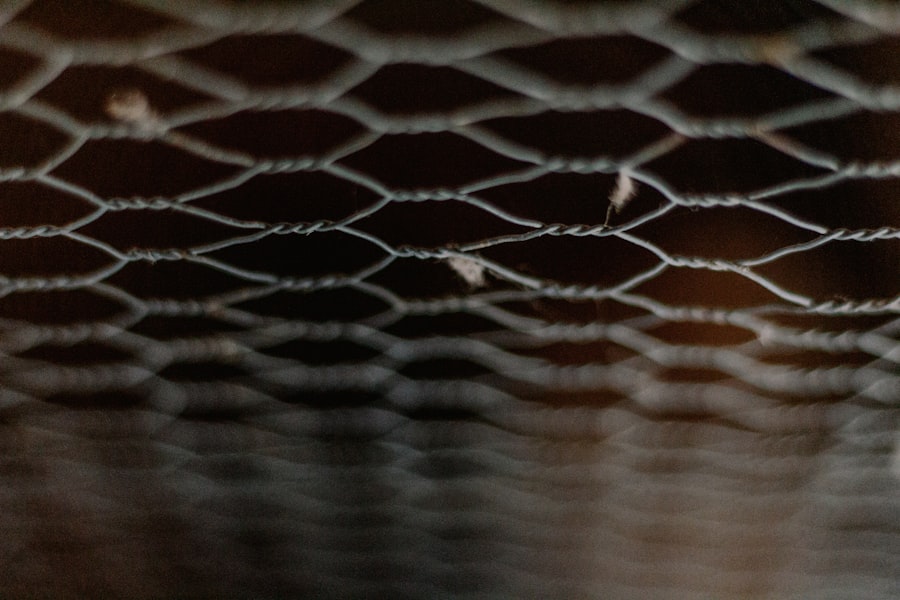
Adequate space and enrichment are essential for the well-being of chicks in a brooder. Providing enough space allows the chicks to move around freely, exercise their wings, and engage in natural behaviors. This is important for their physical and mental development, as well as their overall health and well-being.
Enrichment in the brooder can come in many forms, such as perches, branches, and other items that allow the chicks to climb, jump, and flap their wings. These activities help to strengthen their muscles, improve coordination, and provide mental stimulation. Enrichment also helps to prevent boredom and reduce stress, which can lead to healthier and happier chicks.
By providing adequate space and enrichment in the brooder, you can create an environment that meets the chicks’ natural needs and allows them to thrive. This sets them up for success as they grow and develop into healthy adult chickens.
Clipping wings
Clipping wings is a common practice for chicken owners who want to prevent their birds from flying over fences or escaping from enclosures. This involves trimming the primary feathers on one wing to prevent the bird from achieving lift when it tries to fly. While this can be an effective way to control a chicken’s ability to fly, it’s important to consider the potential impact on the bird’s natural behaviors and instincts.
Clipping wings can limit a chicken’s ability to express its natural instinct to fly, which can lead to frustration and stress. It’s important to weigh the benefits of clipping wings against the potential negative impact on the bird’s well-being. If you choose to clip your chicken’s wings, it’s important to do so carefully and with proper guidance to ensure that it is done safely and humanely.
Using a cover or lid
Using a cover or lid on the brooder is an important safety measure to prevent chicks from escaping or being exposed to potential dangers. Chicks are curious and active creatures, and they may try to jump or fly out of the brooder if given the opportunity. A secure cover or lid helps to contain the chicks and keep them safe inside the brooder.
When choosing a cover or lid for the brooder, it’s important to select one that allows for proper ventilation while also preventing the chicks from escaping. This can be achieved with a wire mesh cover or a solid lid with ventilation holes. It’s important to regularly check the cover or lid for any damage or wear that could compromise its effectiveness in keeping the chicks safe.
By using a cover or lid on the brooder, you can create a secure environment for the chicks that prevents escapes and protects them from potential hazards.
Minimizing stress and boredom

Providing Enrichment
Providing enrichment, such as perches, branches, and other items for the chicks to explore and interact with, can help minimize stress and boredom.
Creating a Comfortable Environment
In addition to enrichment, it’s essential to provide a clean and comfortable environment for the chicks. This includes regular cleaning of the brooder, providing fresh bedding, and ensuring that food and water are readily available. A clean and comfortable environment helps to reduce stress and promote overall well-being for the chicks.
Supporting Natural Behaviors and Health
By minimizing stress and boredom in the brooder, you can create an environment that supports the natural behaviors and instincts of the chicks while also promoting their health and welfare.
Supervising and monitoring the brooder
Supervising and monitoring the brooder is an important aspect of caring for young chicks. Regular observation allows you to ensure that the chicks are healthy, safe, and comfortable in their environment. It also provides an opportunity to identify any potential issues or concerns that may arise.
When supervising the brooder, it’s important to check on the chicks regularly to ensure that they have access to food and water, are maintaining proper body temperature, and are not showing signs of stress or illness. Monitoring their behavior and interactions with each other can also provide valuable insight into their well-being. In addition to regular supervision, it’s important to maintain a clean and hygienic environment in the brooder.
This includes regular cleaning of bedding, food and water containers, and any other items in the brooder. By supervising and monitoring the brooder, you can ensure that the chicks are thriving in their environment and address any issues that may arise promptly. In conclusion, understanding the instinct to fly is crucial when setting up a brooder for young chicks.
Choosing the right brooder setup involves providing adequate space, heating, and enrichment for the chicks. Clipping wings should be carefully considered, while using a cover or lid on the brooder can help keep chicks safe. Minimizing stress and boredom through enrichment and regular supervision is essential for promoting the health and well-being of young chicks in a brooder.
If you’re looking for tips on how to keep chickens from flying out of the brooder, you might also be interested in this article on creating a garden chicken coop. This article provides valuable information on how to design a coop that will keep your chickens safe and secure while also allowing them to enjoy the benefits of being in a garden environment.
FAQs
What is a brooder?
A brooder is a heated enclosure used to raise young poultry, such as chicks, until they are old enough to regulate their own body temperature.
Why do chickens try to fly out of the brooder?
Chickens have a natural instinct to explore and forage, which can lead them to try to escape from the brooder in search of food and space.
How can I prevent chickens from flying out of the brooder?
To prevent chickens from flying out of the brooder, you can cover the top with a wire mesh or netting to limit their ability to escape while still allowing for ventilation.
What other measures can I take to keep chickens from flying out of the brooder?
You can also lower the height of the brooder walls, provide plenty of space and enrichment inside the brooder, and ensure that the chicks have access to food and water to reduce their desire to escape.
Are there any specific breeds of chickens that are more prone to flying out of the brooder?
Some breeds of chickens, such as game birds and bantams, are known for their strong flying abilities and may be more likely to attempt to escape from the brooder.
Meet Walter, the feathered-friend fanatic of Florida! Nestled in the sunshine state, Walter struts through life with his feathered companions, clucking his way to happiness. With a coop that’s fancier than a five-star hotel, he’s the Don Juan of the chicken world. When he’s not teaching his hens to do the cha-cha, you’ll find him in a heated debate with his prized rooster, Sir Clucks-a-Lot. Walter’s poultry passion is no yolk; he’s the sunny-side-up guy you never knew you needed in your flock of friends!

